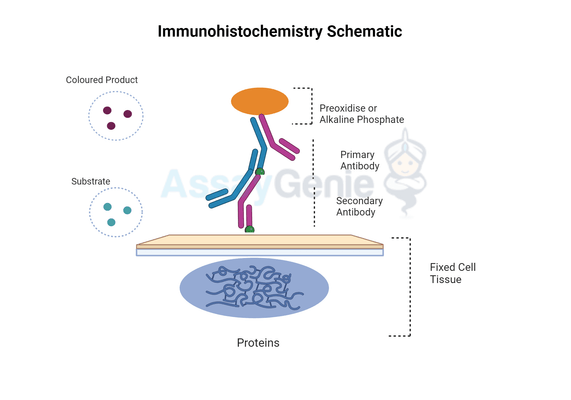The Importance of Immunohistochemistry Training in Modern Scientific Research
Immunohistochemistry (IHC) stands as a critical tool in the realm of biomedical research and diagnostic practices, offering a bridge between molecular insights and the intricate visualization of tissues. This technique, leveraging the specificity of antibodies to bind to antigens in biological tissues, unveils not only the presence but also the localization of proteins within cells and tissues. The evolution of IHC from a rudimentary staining procedure to a pivotal methodology in scientific investigations underscores the necessity for comprehensive training programs. Such programs equip researchers and diagnosticians with the knowledge and skills to implement IHC effectively, thereby advancing our understanding of complex diseases and facilitating the development of targeted therapies.
Understanding Immunohistochemistry: A Foundational Overview
Immunohistochemistry amalgamates immunological, biochemical, and anatomical sciences to visualize discrete components within cells and tissues, utilizing highly specific antigen-antibody reactions tagged with a visible marker. This method has become indispensable in the fields of pathology and research, offering insights into cellular content and distribution patterns that underpin disease mechanisms and therapeutic targets.
The Role of Antibodies and Antigens in IHC
At the heart of IHC lies the interaction between antibodies and antigens. Antibodies, or immunoglobulins, are Y-shaped proteins generated by the immune system, designed to recognize and bind with high affinity to specific antigens—molecules capable of inducing an immune response. In IHC, antibodies are used as precise tools to detect specific proteins within tissue sections, revealing the spatial and temporal distribution of these proteins in the context of disease or normal physiology.
Visualization and Detection Techniques
IHC detection involves several critical steps, including tissue preparation, antigen retrieval, and the application of primary and secondary antibodies, followed by visualization using chromogenic substrates or fluorescent dyes. The choice between direct and indirect detection methods depends on the specific requirements of the study, balancing sensitivity, specificity, and the complexity of the tissue being analyzed.
The Necessity of Comprehensive Immunohistochemistry Training:
Given the intricate nature of IHC and its pivotal role in research and diagnostics, specialized training programs are essential. These programs cover a broad spectrum of topics, from the basics of antibody-antigen interactions to advanced techniques in staining and imaging. Participants learn to design and optimize IHC protocols, troubleshoot common issues, and interpret results within the broader context of their research objectives.
Components of Effective IHC Training Programs
Effective immunohistochemistry training programs are characterized by a blend of theoretical knowledge and hands-on experience. Key components include:
-
- Foundational Knowledge: Understanding the principles of immunology, biochemistry, and molecular biology that underpin IHC.
- Practical Skills: Gaining proficiency in tissue sectioning, staining, and microscopy, alongside the ability to troubleshoot and optimize protocols.
- Interpretation and Analysis: Learning to accurately interpret staining patterns and intensity, crucial for drawing meaningful conclusions from IHC data.
- Advanced Techniques: Exposure to cutting-edge approaches, such as multiplex IHC and quantitative image analysis, expanding the utility and accuracy of IHC studies.
Bridging Research and Diagnostic Applications
IHC training not only advances scientific research but also enhances diagnostic capabilities. In clinical settings, IHC aids in the diagnosis and classification of diseases, particularly cancers, by identifying specific molecular markers. Training programs, therefore, emphasize the dual importance of IHC in both advancing our understanding of disease mechanisms and improving patient outcomes through precise diagnosis and targeted therapy selection.
The Future of Immunohistochemistry Training
Conclusion
References
- Coons, A.H., Creech, H.J., Jones, R.N., and Berliner, E. (1941). "The Demonstration of Pneumococcal Antigen in Tissues by the Use of Fluorescent Antibody." Journal of Immunology, 45(3), 159-170.
- Taylor, C.R., and Cote, R.J. (2005). "Immunomicroscopy: A Diagnostic Tool for the Surgical Pathologist." 3rd ed., Saunders Elsevier.
- Hsu, S. M., Raine, L., & Fanger, H. (1981). The use of antiavidin antibody and avidin-biotin-peroxidase complex in immunoperoxidase technics. American journal of clinical pathology, 75(6), 816-821.
- Shi, S.R., Key, M.E., and Kalra, K.L. (1991). "Antigen Retrieval in Formalin-fixed, Paraffin-embedded Tissues: An Enhancement Method for Immunohistochemical Staining Based on Microwave Oven Heating of Tissue Sections." Journal of Histochemistry & Cytochemistry, 39(6), 741-748.
- Goldstein, N.S., Hewitt, S.M., Taylor, C.R., Yaziji, H., and Hicks, D.G. (2007). "Recommendations for Improved Standardization of Immunohistochemistry." Applied Immunohistochemistry & Molecular Morphology, 15(2), 124-133.
- Stack, E.C., Wang, C., Roman, K.A., and Hoyt, C.C. (2014). "Multiplexed Immunohistochemistry, Imaging, and Quantitation: A Review, With an Assessment of Tyramide Signal Amplification, Multispectral Imaging and Multiplex Analysis." Methods, 70(1), 46-58.
- van der Loos, C.M. (2008). "Multiple Immunoenzyme Staining: Methods and Visualizations for the Observation with Spectral Imaging." Journal of Histochemistry & Cytochemistry, 56(4), 313-328.
- Gurcan, M.N., Boucheron, L.E., Can, A., Madabhushi, A., Rajpoot, N.M., and Yener, B. (2009). "Histopathological Image Analysis: A Review." IEEE Reviews in Biomedical Engineering, 2, 147-171.
Written by Tehreem Ali
Tehreem Ali completed her MS in Bioinformatics and conducted her research work at the IOMM lab at GCUF, Pakistan.
Recent Posts
-
Metabolic Exhaustion: How Mitochondrial Dysfunction Sabotages CAR-T Cell Therapy in Solid Tumors
Imagine engineering a patient's own immune cells into precision-guided missiles against cancer—cells …8th Dec 2025 -
The Powerhouse of Immunity: How Mitochondrial Fitness Fuels the Fight Against Cancer
Why do powerful cancer immunotherapies work wonders for some patients but fail for others? The answe …5th Dec 2025 -
How Cancer Cells Hijack Immune Defenses Through Mitochondrial Transfer
Imagine a battlefield where the enemy doesn't just hide from soldiers—it actively sabotages their we …5th Dec 2025




